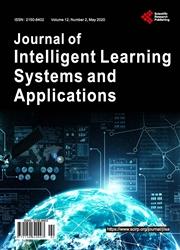Feature Selection for Time Series Modeling
引用次数: 11
Abstract
In machine learning, selecting useful features and rejecting redundant features is the prerequisite for better modeling and prediction. In this paper, we first study representative feature selection methods based on correlation analysis, and demonstrate that they do not work well for time series though they can work well for static systems. Then, theoretical analysis for linear time series is carried out to show why they fail. Based on these observations, we propose a new correlation-based feature selection method. Our main idea is that the features highly correlated with progressive response while lowly correlated with other features should be selected, and for groups of selected features with similar residuals, the one with a smaller number of features should be selected. For linear and nonlinear time series, the proposed method yields high accuracy in both feature selection and feature rejection.时间序列建模的特征选择
在机器学习中,选择有用的特征和剔除冗余特征是更好地建模和预测的前提。在本文中,我们首先研究了基于相关分析的代表性特征选择方法,并证明了它们虽然可以很好地用于静态系统,但对于时间序列并不适用。然后,对线性时间序列进行了理论分析,说明了它们失败的原因。基于这些观察结果,我们提出了一种新的基于相关性的特征选择方法。我们的主要思想是选择与渐进响应高度相关而与其他特征相关性较低的特征,对于残差相似的被选特征组,选择特征数量较少的特征组。对于线性和非线性时间序列,该方法在特征选择和特征抑制方面都具有较高的精度。
本文章由计算机程序翻译,如有差异,请以英文原文为准。
求助全文
约1分钟内获得全文
求助全文

 求助内容:
求助内容: 应助结果提醒方式:
应助结果提醒方式:


